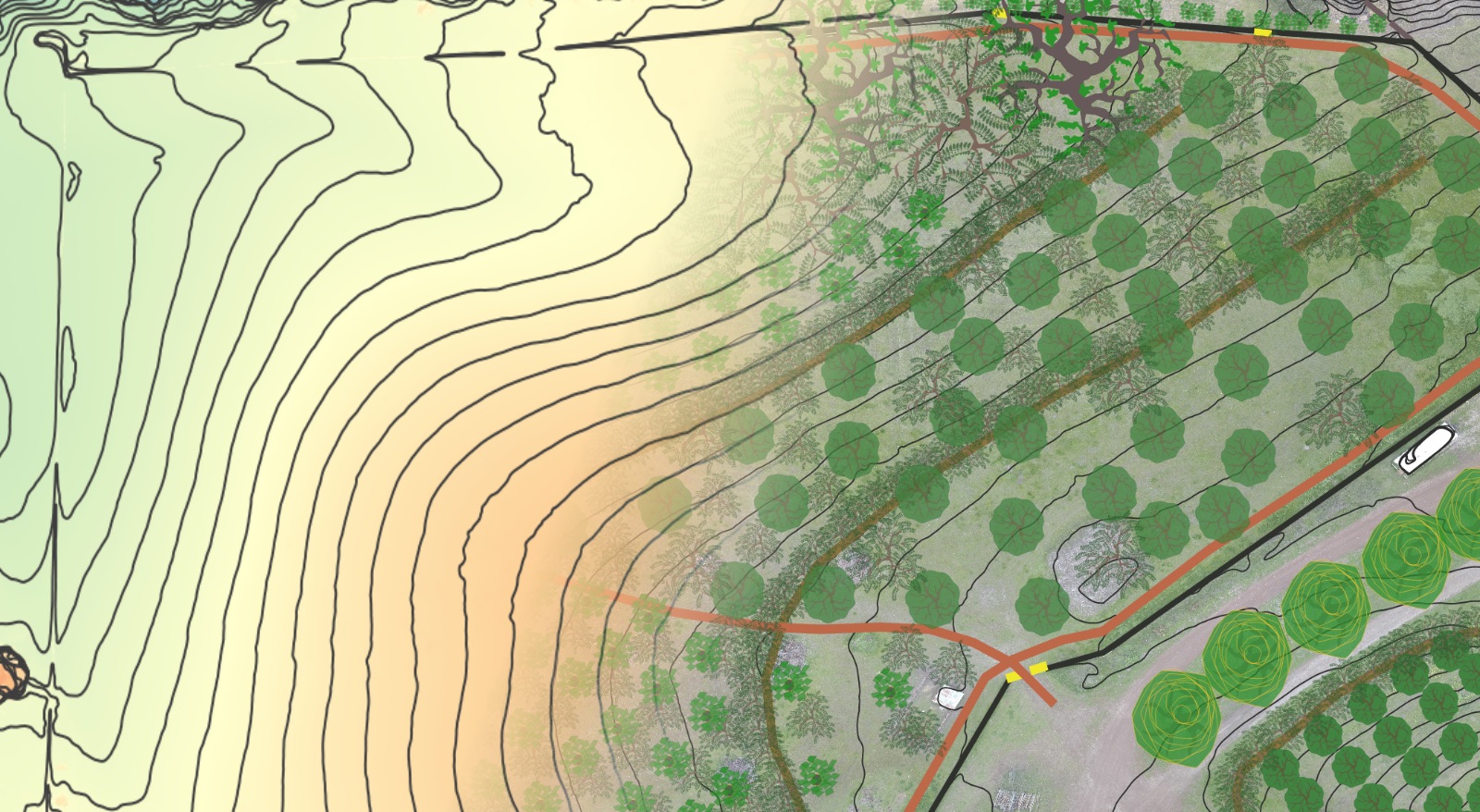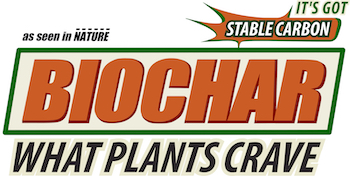Your cart is currently empty!
A Primer On Hugelkultur
on
Welcome to the…
Living Systems – Food Production Series
This series of posts details different food production systems and the relevant design and management criteria that accompany their establishment and operation. These primers are meant to provide a broad overview of each system and serve as a jumping off point for further research specific to your context. Remember, context is everything – start with small and intensively managed systems that you monitor closely before expanding to larger and more extensive systems. No matter your context, there is an appropriate system for you to increase your food sovereignty. OK, let’s grow!
- Agroforestry
- Forest Farming
A Primer On Hugelkultur
What Is Hugelkultur?
Hugelkultur is the technique of burying woody material and mounding it over with earth to create raised garden beds.
When And Where Is Hugelkultur Appropriate?
Hugelkultur is most appropriate in temperate climates with a pronounced wet season – often regions that are heavily forested – and is a way to make productive use of large amounts of wood or slash left over from logging, earthmoving or fuels reduction work. These are generally areas that can develop deep soils (i.e. not the tropics). Hugelkultur works well throughout the U.S. southeast and on up the U.S. eastern seaboard into Canada. It has a long history of use in analogous climate regions throughout northern Europe and into Russia.
Hugelkultur mounds and trenches, when constructed properly, create growing systems for annual and perennial crops that can dramatically reduce and in some cases eliminate the need for irrigation, depending on what is being grown and the climate conditions.
Hugelkultur mounds are particular advantageous in areas with low soil organic matter and low water-retention capacity. They are also excellent in locations with too much water flowing over the soil surface, areas with poor drainage, or areas with high water tables that can inhibit healthy plant root development. By creating a mounded structure, the main growing horizons of the soil are elevated above potentially soggy soils, while also still being able to draw water up to the active root zones of the plants, primarily via the established mycelial network. Hugel mounds also work well to prolong moisture retention and availability in soils with sharp drainage (i.e. glacial sands, rocky soils) or with seasonal dry periods.
How Does Hugelkultur Work?
Generally speaking, a hugelkultur mound will function to store and transport water to within reach of plant roots (this is more due to it providing the habitat for an extensive mycelial network to grow undisturbed by surface cultivation than the presence of the actual woody material itself). Because hugelkultur mounds are so carbon-rich, they will over time generally create fungal-dominant soils that are best planted out to woody perennials, though annuals can still thrive in and amongst the woody polyculture.
Beds or mounds are often crenellated in shape to create sun traps, shade pockets, and windbreaks or to enhance water retention. Hugelkultur beds, once made, are low-maintenance, low-care, high-production no-till growing systems that work for annual and perennial crops alike.
Do’s And Don’ts When Constructing A Hugelkultur Mound or Bed
When constructing a hugelkultur mound, it is important to follow these general criteria:
- Lay woody material in a way to reduce air pockets as much as possible. The woody material should be packed as tightly as possible to minimize settling as the pile commissions over time. There will always be settling as the wood core breaks down, but by reducing air pockets from the start a more optimal environment for encouraging healthy root growth will be created.
- As you layer in woody material, it can be helpful to shovel soil into gaps. This will help with moisture retention and create a better growing medium for roots, especially during the first few years.
- Cover all of the woody material with at least a foot of soil. Thinly covering the wood with only a few inches of soil will make the pile more prone to drying out. The soil should be deep enough that it creates a perennially-damp environment in the wood core. This will encourage more rapid colonization by mycelium and increase the water and nutrient holding capacity of the pile.
- If brush or branches are used to construct the core make sure there are no branches sticking out from the core, through the soil, and into the air. A dead branch stuck in the soil like this will act like a wick, constantly moving moisture from the inside of the pile and evaporating it to the atmosphere. Cover all woody materials in soil, and leave none of the core exposed to the atmosphere.
- Don’t create a hugel mound using wood that is rot-resistant. While these woods will eventually break down, you don’t want to wait 100 years for your hugel to mature. Some examples include cedar, black locust, and redwood. Do your research!
- Avoid using any allelopathic species when creating the wood core. Allelopaths are species of plants and trees that exude compounds, generally from their leaves and bark, and sometimes through their root systems, that stunt or kill most other types of vegetation. Some examples include black walnut (Juglans nigra), Peruvian pepper tree (Schinus molle), Tree of Heaven (Ailanthus altissima) and eucalyptus species. Do your research! I recommend starting with this thread.
- Use rotten wood if available. This wood will help to inoculate your pile with mycelium to break down any newer wood, and will start functioning as a water and nutrient storage more quickly. Rotted wood also won’t compete for nitrogen with your plants because it has already gone through the bulk of the nitrogen-intensive part of its breakdown process.
- Layer in fresh cut green material as a source of nitrogen to help faciliate the breakdown of the wood core without over-competing with the plants for nitrogen in the soil. You can even include animal offal, carcasses, small diameter fresh cut woody slash with leaves on, grass clippings, or just about any other source of nitrogen – spread in thin layers between each layer of woody material – to help the breakdown and maturation process along. This is even more important if you are using freshly cut wood that hasn’t had a chance to decompose at all.
- Mulch and seed hugelkultur mounds immediately. As soon as the mound of wood is covered, plant seeds, including cover crop. The quicker that living roots get into the soil the healthier and more functional the pile will be. All young hugelkultur mounds should be mulched to decrease evaporation from the soil surface and provide protection from falling raindrops until a solid plant canopy has grown in.
- Avoid using this technique in raised beds with metal sides. While this is a fashionable (though not terribly functional) way to construct raised garden beds, the metal increases the heat of the soil immediately on the other side of it, often times reaching lethal temperatures for plant roots. This also has the effect of turning any sticks or wood chunks in contact with that super-heated soil zone to act as wicks and efficiently dehydrate the bed – not what you want!
How To Build A Hugelkultur Bed
Hugelkultur can be done as in-ground beds, with the wood trenched below the soil surface, as mounds, or somewhere in between (this is generally the way to go). Bigger is generally better (the mound will have more thermal and hydrologic inertia to weather cold snaps and drought periods), though they can be the same size as standard raised garden beds, and can look exactly the same if so desired.
Start by digging a trench of an appropriate size to contain 1/3rd – 1/2 of your woody material. Reserve the soil to layer in between the layers of woody material as you build the bed, and to complete the final burial.
The “wood core” of the mound or trench can be filled with woody material large and small, including large, intact sections of tree trunks, bucked up rounds, split wood, slash left over from brush clearing, and even wood chips. Over time, as mycelium breaks down the wood, the mound becomes a sponge for water and nutrients.
Add in some form of beneficial inoculant with each layer as you go – indigenous micro-organisms, EM-1, compost tea, worm castings – whatever you have on hand, ideally native to the same site.
Planting A New ‘Young’ Hugelkultur Mound
Hugelkultur mounds are known to act as nitrogen traps, and can limit the growth of new vegetation on top of them simply because they are a giant carbon sponge that will hungrily use up available nitrogen in its breakdown. This nitrogen-deficient growth delay can be ameliorated by “charging” hugel berms with nitrogen sources before covering them with soil. Blood meal, urine, and fresh cut green material can all be laid in with the wood to provide ample nitrogen, thereby speeding breakdown of the woody material and hastening the creation of the mycelial sponge into which beneficial plants can be sown. Charged biochar is another great ‘amendment’ to layer in if you have it available.




